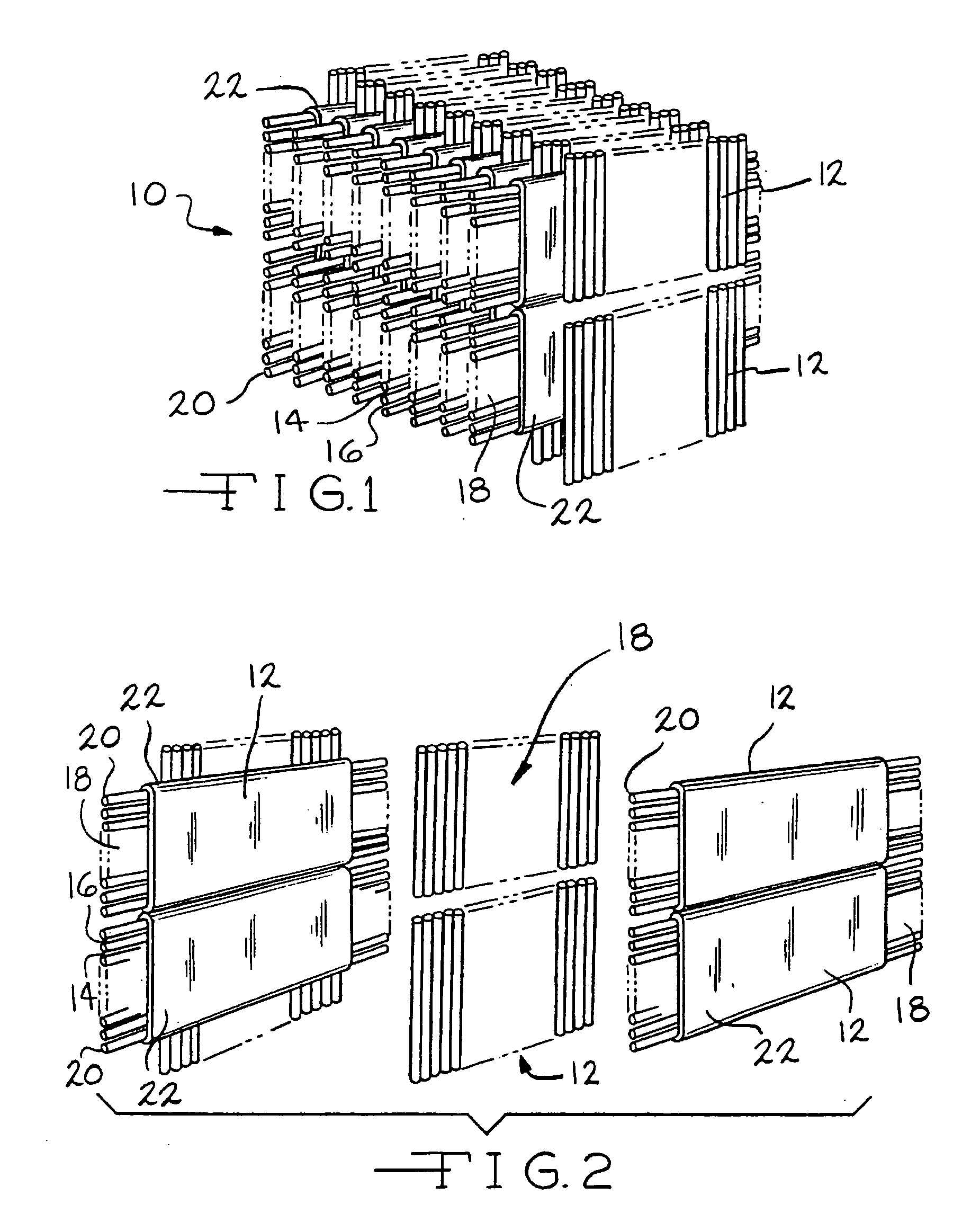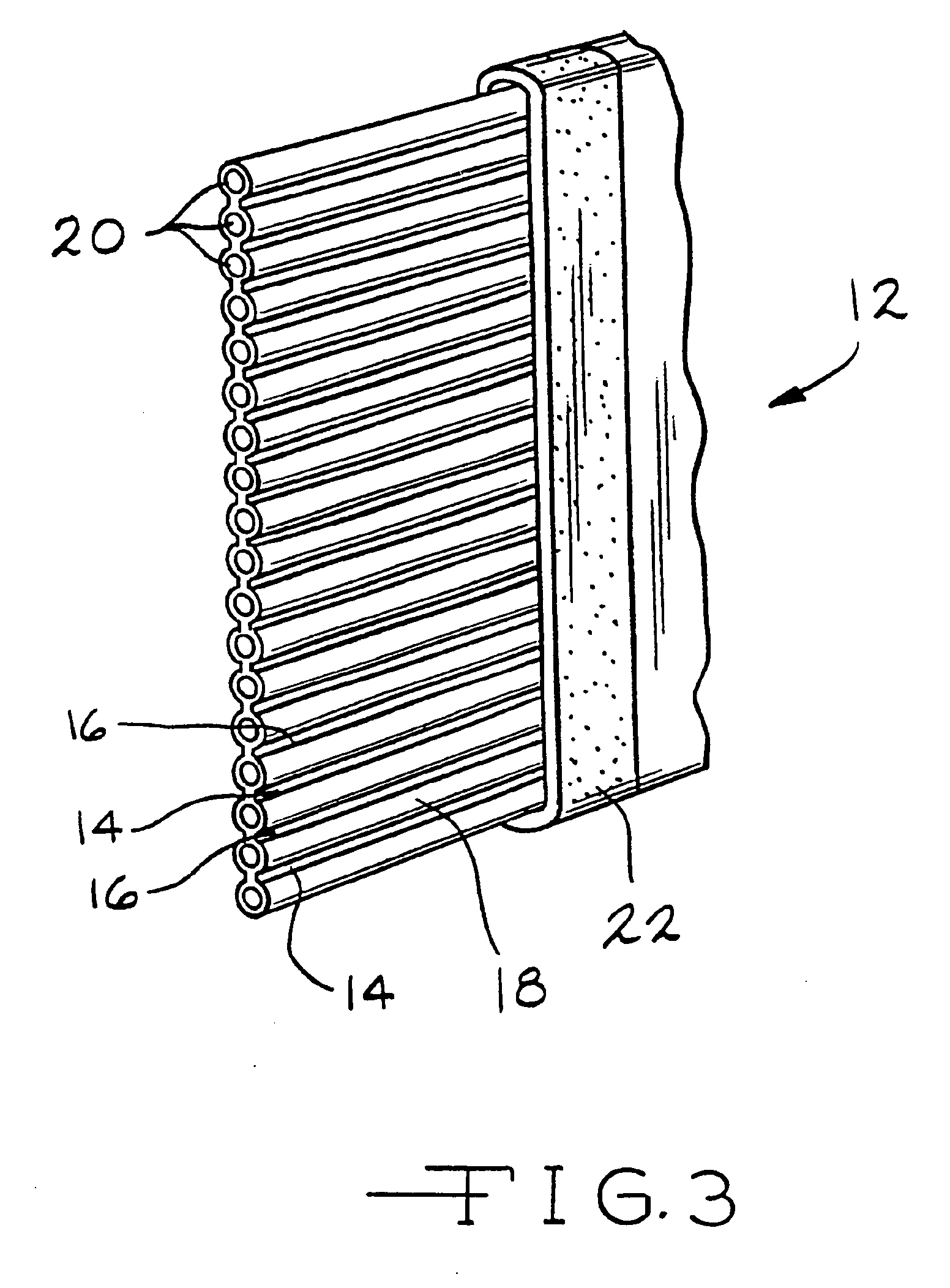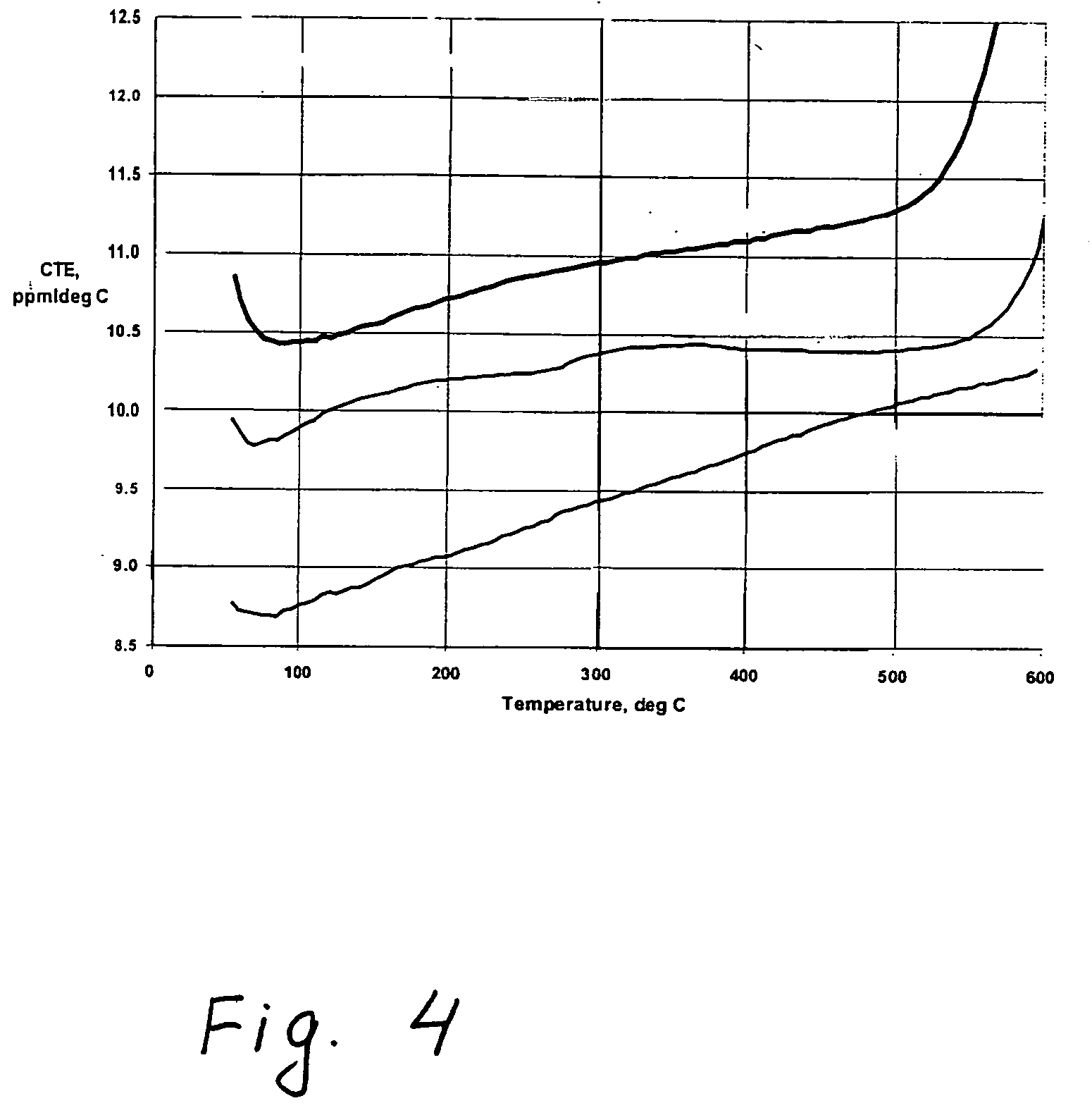Sealing materials and devices utilizing such materials
a technology of sealing materials and glass, which is applied in the field of glass sealing frits, can solve the problems of either sealing or electrolyte sheets, thermal stress in fuel cell stack components, and cracking of electrolyte sheets
- Summary
- Abstract
- Description
- Claims
- Application Information
AI Technical Summary
Benefits of technology
Problems solved by technology
Method used
Image
Examples
examples
[0030] The sealing glass frits of this invention will be further clarified by the following three examples, showing glass frit composition in mole percent.
TABLE 1Example 1Example 2Example 3SiO278.078.077.1Al2O32.52.52.4Na2O30.00.00.4K2O19.514.517.4ZnO0.00.00.0MgO0.05.02.5TiO20.00.00.25
The data shown in Table 1 is for three exemplary alkali-silicate glass compositions. More specifically, these are potassium-silicate frit glass compositions. After melting, each composition was made into frit by dry ball-milling to a mean particle size of less than 30 μm, for example, 5 μm to 20 μm. The high CTE values and the high softening point required for SOFC sealing material is met by adding an expansion coefficient raising filler to the relatively high viscosity vitreous powdered base glass. Exemplary fillers are an alumina mill, zirconia (CTE≈120×10−7 / ° C.) or leucite K2O— Al2O3— 4SiO2 (CTE≈200×10−7 / ° C.) addition, 5 wt % to 25 wt %, preferably 5 to 20 wt.
[0031] Example 1 frit is essential...
PUM
| Property | Measurement | Unit |
|---|---|---|
| Temperature | aaaaa | aaaaa |
| Particle size | aaaaa | aaaaa |
| Temperature | aaaaa | aaaaa |
Abstract
Description
Claims
Application Information
 Login to View More
Login to View More - R&D
- Intellectual Property
- Life Sciences
- Materials
- Tech Scout
- Unparalleled Data Quality
- Higher Quality Content
- 60% Fewer Hallucinations
Browse by: Latest US Patents, China's latest patents, Technical Efficacy Thesaurus, Application Domain, Technology Topic, Popular Technical Reports.
© 2025 PatSnap. All rights reserved.Legal|Privacy policy|Modern Slavery Act Transparency Statement|Sitemap|About US| Contact US: help@patsnap.com



